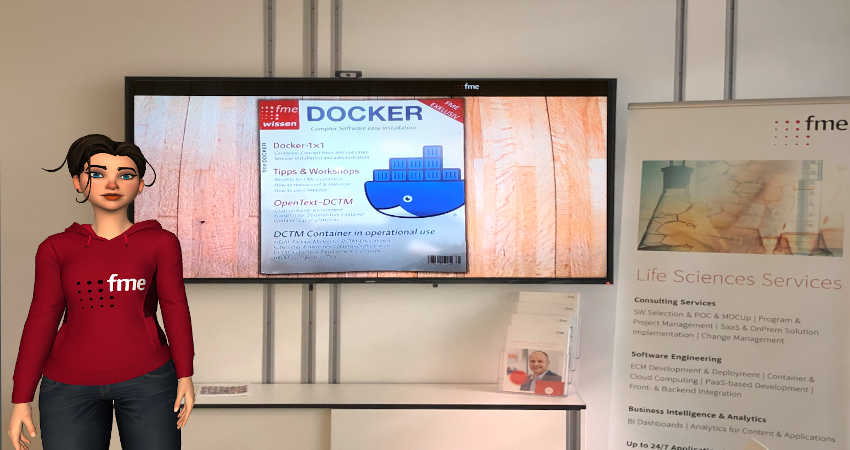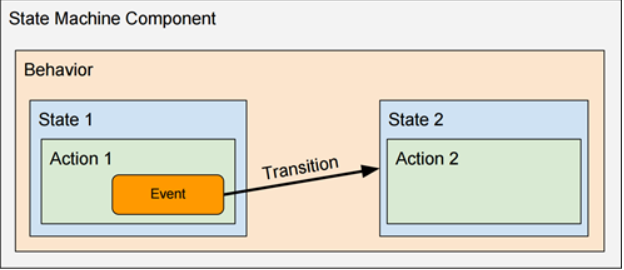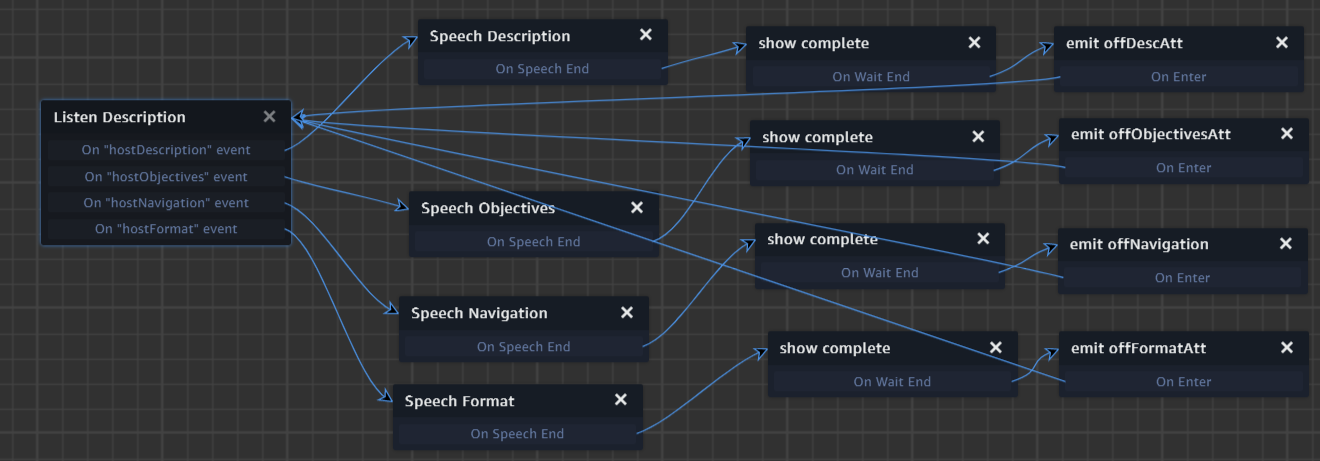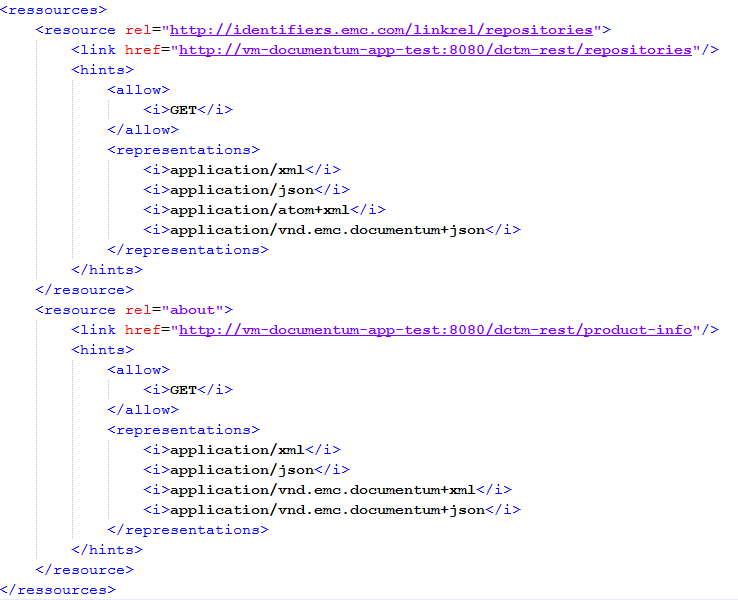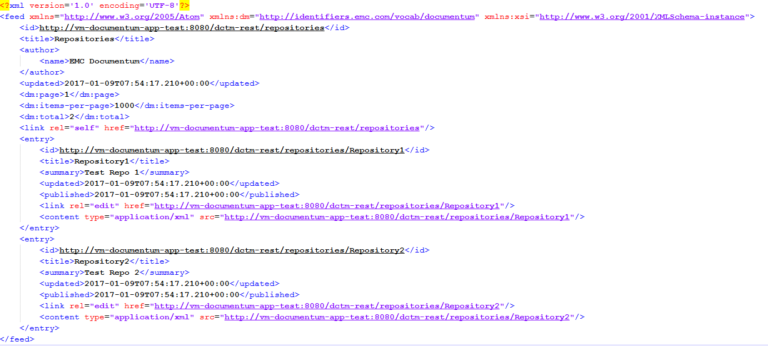
by Dirk Bode | Sep 29, 2023 | Inside fme
In today’s fast-paced business environment, the ability to adapt, innovate, and foster an open culture is essential. At fme, we have a fundamental belief that our culture and strategy are symbiotic. They interact to create an environment that pushes us forward, and in return, we contribute to pushing the industry itself ahead. Two years ago, we decided to formalize one of the vital elements that have long been ingrained in our culture: Open Feedback.
Aligning with Core Values
Our organizational ethos rests on six core values: Integrity, Flexibility, Professionalism, Teamwork, Enjoyment, and Sustainability. Our open feedback mechanism, a robust system that allows transparent, two-way communication across hierarchical levels and departments, aligns perfectly with many of our values, especially the one of “Integrity”. It’s more than a process — it’s a manifestation of how we hold ourselves accountable to our clients, our stakeholders, and most importantly, each other.
Structure & Timing: When Everyone Speaks, Everyone Listens
The crux of our Open Feedback culture is timely communication. In an industry as dynamic as ours, where we provide a lot of professional services and IT products, time is of the essence. Our employees are encouraged to express their viewpoints, both positive and negative, immediately rather than waiting for quarterly or annual reviews. The goal is simple: rectify mistakes, pivot actions, and multiply successes in real-time, rather than post-analysis.
The Nuanced Transparency of Respectful and Direct Feedback
At fme, open feedback is an orchestrated blend of precision, empathy, and clarity. It’s not about dishing out blunt criticisms or offering hollow praises. Our approach goes deeper than that, it’s about respectful and direct communication that serves the collective good of the organization. Here’s how the PIW (Perception | Impact | Wish) formula works:
- Expressing Perception: First, the person who gives feedback articulates his or her personal perception of the situation. This subjective aspect adds a layer of empathy, making it clear that the feedback is not an attack, but a viewpoint meant for constructive dialogue.
- Describing Impact: Next, the feedback aims to elucidate the impact of the behavior under scrutiny, from the giver’s perspective. This is where the ‘why’ joins the ‘what.’ By detailing how certain actions have influenced a project, client relationship, or team morale, it fosters a deeper understanding of the broader implications of one’s conduct.
- Articulating Desired Behavior and Result (Wish): Finally, the conversation culminates with a description of the specific behavior that would be more aligned with fme’s values and objectives. This not only sets a clear pathway for improvement but also helps in aligning individual actions with the company’s overarching strategy and culture.

Everybody who has done the Open Feedback Culture Training at fme receives this postcard with feedback rules on the back
By meticulously combining these elements, our open feedback process provides a holistic framework for ongoing personal and professional development. This trifold approach ensures that the feedback isn’t just heard, but is understood, actionable, and aligned with both the company’s culture and strategic goals.
Global Collaboration: A Feedback Loop That Spans Continents
Our open feedback culture isn’t restricted by geography. With presences in the US, EU, and India, feedback loops are as global as our operations. This international perspective enriches our understanding, bringing in diverse viewpoints that ultimately contribute to a more cohesive and stronger strategy.
At fme, we train our teams to be aware of cultural nuances when utilizing our open feedback model. This ensures that the messages exchanged are not just accurate but also respectful, fitting within the varying social norms of our diverse team. This commitment to global collaboration demands adaptability and empathy, as we recognize there can be multiple valid approaches to a situation, each influenced by different cultural backgrounds.
By weaving cultural considerations into our feedback and teamwork, we turn diversity into an asset, enabling a cohesive and innovative global work environment.
Wrapping It Up
In the past two years, we have found that open feedback significantly contributes to agility, client success, and professional growth. But most importantly, it helps us remain true to our core value of Integrity, acting as the glue that brings all our other values together.
Our commitment to open feedback has positioned fme as a company that is not only innovative but also transparent and forward-thinking. It’s a unique combination that makes us more than a service provider; it makes us a partner in your success.
So, when you think of fme, think of a culture that is as open as it is innovative, as respectful as it is agile. We’re not just transforming industries; we’re also transforming the way we work, one piece of open feedback at a time.
Changing or finessing corporate culture is not an overnight task; it’s a marathon, not a sprint. It takes years, not merely months, to deeply embed transformative changes into the very fabric of an organization. At fme, we are proud to say that we are on our way, continually evolving and adapting. Just like our approach to feedback and cultural diversity, our ongoing journey to enhance corporate culture remains rooted in our core values and the diverse strengths they bring.
So, while the road may be long, our collective commitment to integrity, flexibility, and collaboration makes it an enriching and transformative journey, one that continually shapes us into a more innovative, cohesive, and client-focused enterprise.

by Thorsten Knoepp | Apr 30, 2020 | Inside fme, Life Sciences
Digital learning is an exciting and at the same time very dynamic area where technologies are constantly evolving. There is an increasing need for companies to integrate this new way of learning into the corporate culture and overall business strategy in order to leverage its efficiency gains.
Increasing digitization is changing the way we live, work and study today and in the future. Without the use of digital media, lifelong and true-to-life education is hardly conceivable. When it comes to professional learning, in particular, digital media offer new opportunities. They convey content quickly, effectively and on-demand.
 Learning on paper
Learning on paper
Let’s have a look at a simple example from the pharmaceutical industry: digital transformation of manufacturing processes is a top priority for many companies today. On the way to a digital company, you have to think about manufacturing software, networking of components and systems in a highly integrated IT architecture. The current learning standard is still based on the analogue learning method “on paper”. Although innovation progresses rapidly around them, the employees have to laboriously work through inanimate information to understand equipment, processes or infrastructure systems. Many of these themes are so extensively profound and highly complex that they fill entire bookshelves.
 Learning using LMS
Learning using LMS
On the way to the digitization of the pharmaceutical industry, the introduction of learning management systems (LMS in short) appeared as an initial solution. Originally established to deliver compliance training to the right people and ultimately to document the completion of training, today’s focus is more on the learning experience and sharing of knowledge. As a “benefit”, it allowed employees to access any learning content at any time – not just during a training course. Even though they didn’t bring about a great innovative change for the individual employee (digital learning methods), the LMS is at present the cornerstone for future learning.
 Learning by Authoring Program
Learning by Authoring Program
The introduction of special “e-learning” programs and software for authors, which supported the learning management systems, brought about a change in the learning methods for employees: apart from the pure paper / text method, training became now enriched with simple language, animations and interactions. This enables the learner to experience a heightened sense of being involved in the training.
 Learning by Virtual & Interaction Training
Learning by Virtual & Interaction Training
The next step is now to allow the learning staff to immerse themselves in the training interactively or virtually. “Experience learning” with digital learning methods, such as Virtual Reality (VR) and Augmented Reality (AR) solutions, can actively engage learners for rapid learning, customer loyalty, and decision making. These technologies allow employees to experience learning content rather than merely read it.
Ultimately, all industries face the same problem: they need to bring professional knowledge to life more efficiently and cost-effectively. Training is costly to businesses because it reduces working time and resources while trying to improve or maintain quality. It is crucial, however, that – on the way to Pharma 4.0 – not only do systems and equipment get modernized but also staff gets better training.

A cost-effective way to create AR / VR applications is Amazon Web Services with the Amazon Sumerian solution. Scenes can be created which involve new employees more actively during onboarding. It is possible to model a training environment for teaching or to simulate real-life scenarios. Similarly, an application for troubleshooting and repairing common problems could be created or in “digital-healthcare” an animated visualization of the brain, spine, or heart, which is explained by a host and explored by the learner. The applications are many and varied.
Ultimately, you can let your imagination run wild to create not only a comprehensive but also a very appealing, virtual coaching experience. Additional equipment or complex virtual reality platform management is not required. It is also possible to create realistic virtual environments and scenes without having to purchase special tools for 3D modeling, animation, lighting, audio editing, or programming.
In this context, professional-quality, realistic scenes can be created quickly and easily using an integrated AWS Sumerian Web-based editor.
You can easily generate high-quality Virtual Reality (VR), Augmented Reality (AR), and 3D applications with a range of tools. There is no need for deeper programming or 3D graphics knowledge.
The finished creation is provided cross-platform. There is no need to write custom code or deal with specialized delivery systems and processes. The scenes are published as a static website that you can load directly into any compatible browser or embed in your website.
You are supported by a visual script tool. This intuitively supports defining a flow logic to allow objects and characters (so-called Sumerian hosts) to react to user actions and thus control Amazon Sumerian behavior.
In so-called “state machines”, each object is assigned an action and these are then managed in an overarching collection of states. The current state of the application may then switch between the predefined states based on user interactions, timing, or other events.
Each state in an object consists of one or more actions, each containing a logic defined by Amazon Sumerian. For example, an active state action may cause a user to click an object that executes a script. Another action may be to record a voice sequence that is sent to an Amazon Lex chat bot or interacts with other AWS services.
To create realistic and unique learning experiences, Amazon Sumerian also offers a catalog of ready-made objects. Users can access this detailed library to create VR environments. You can then view them with any hardware that supports the WebVR and WebGL platforms. They are also not restricted to the platform’s catalog because they can also use third-party material libraries. In addition, objects created on the platform can be imported.
On top of that, the platform also uses the Amazon Polly and Amazon Lex technologies, as well as other services from Amazon. Polly allows you to convert text to speech. It is essentially an AI that uses deep learning to replicate human speech patterns. The end result is a lifelike voice. Lex has similar text-to-speech capabilities. However, conversation interfaces can also be created here. In the Amazon Sumerian context, Lex lets you create voice-activated commands for a learning module.

by Monika Koch | Apr 30, 2020 | Inside fme, Life Sciences
Within these years of learning, I was established in the company’s IT department and made some excursions to purchasing, sales and production control departments.
I was taught that IT links everything in a company together. Each department has their own specific IT requirements, used software tools and tasks to fulfil. Obviously and in many areas, it was very easy to see that business and IT folks did not speak the same language.
Some of my IT colleagues preferred to stay in their IT silo than exchanging with business. Unfortunately, there were many prejudices between the two camps.
Studies are over, and now…
When I passed my exam, I spent some months in the classical IT helpdesk department, which has expanded my experience with people, tools and associated difficulties. It was a great opportunity to get insights from different departments and to connect with a lot of people.
Afterwards, I moved into the R&D (Research & Development) department. Here I served as an interface between IT and this specific business area and learned a lot again:
- Many scientists and physicians worked here, everyone unique with a special character, vita and behaviour
- Clinical trial documentation was mainly available as paper file
- Semi-professional CRF design
- A flood of forms
- SOP management on paper base with enormous effort to update, distribute and teach people. Especially the mandatory and regular trainings were extremely boring
- Paper driven SAE management
- Siloed solutions for labelling, shipment and tracking of trial medication and much more
Luckily, my boss there was very curious, open-minded and interested in new trends and developments. This caused the introduction of a document management system within our ‘Klifo’ department to replace paper-based clinical trial documentation by an electronic solution including forms management. Again, I learned much about how to take hurdles, changing the classical way of working, needs for communication.
Sadly, the way was very hard, as many of the old-established staff did not see any sense to move onto an electronic document management system. They argued they could grab directly into the paper files located on the shelf behind their workplace.
My Life Sciences continuance
After a short break and working for a Consulting company with focus on other industries, my Life Sciences way continued in another Life Sciences oriented company. At the (my) beginning, the company sold pure statistical data on pharmaceutical products used for marketing and trend analysis. By the time and after various acquisitions and mergers businesses expanded to provide complete solutions to our clients focused primarily on Phase I-IV clinical trials, associated laboratory and analytical services, including consulting services.
I was part of the global service delivery team where we developed, hosted and supported an analytical software system to analyze pharma marketing, medical and promotional data. Furthermore, we took care of the regular data delivery for various pharmaceutical companies and supported solutions for performance reporting & analytics, Data Management and Business Intelligence.
For myself, this involves working extremely globally (from client perspective as well as internally). It broadens my spectrum of different cultures, thinking, behavior and communication. Even at my location, around 10 nationalities were represented. It was required to be and think flexible and open-minded for new solutions. Very interesting, with new challenges every day.
fme AG: Back to Document Management
A decade later joining the Life Science division of fme AG, I felt like coming back to my roots. Coming back to document management systems (which are nowadays completely different from 20 years before) but difficulties between business and IT continues.
I had a kind of déjà vu when I started a new project recently for a German pharma company and needed to pick up my office key. The way from the main gate to the building, seeing the truck scale and the key transfer process implied NOTHING HAD really CHANGED. Nevertheless, in fact many things have changed.
At this point, I want to encourage anyone to have a look into fme Life Sciences portfolio.
fme is the ideal partner for Life Science companies to implement, improve and strengthen processes around document management systems (Reading example: Case study – Dr. Pfleger Homogenous DMS Infrastructure
Based On OpenText Documentum).
I’m curious about how my journey will continue…

by Maximilian Krone | Aug 2, 2018 | Documentum, ECM, Inside fme, OpenText
What is the “Documentum Rest API”?
In principle, the term Documentum REST API refers to a web interface introduced with Documentum 7 that allows access to objects and functions of OpenText Documentum. This is based on Spring-Boot, is delivered as a WAR file and must be installed on an application server – e.g. Apache Tomcat. This interface can be used to write customized clients, apps, or plug-ins of other systems.
Before the Documentum Rest API, the APIs DFS and DFC had to be used as an interface for business applications in order to interact with Documentum. DFS is based on SOAP and is therefore also a web interface, while DFC is based on Java.
The REST API consists of several residual web services that interact with OpenText Documentum. It is “hypertext-driven, server-side stateless, and content negotiable, which provides you with high efficiency, simplicity, and makes all services easy to consume” [Source: https://community.emc.com/docs/DOC-32266, date of collection: 29.11.2016 – 11:51]
Introduction to REST Services
To understand how the Documentum REST API works, the first step is to explain the basic operation of a general REST service. REST stands for Representational State Transfer and is based on a stateless, client-server and cache capable communication protocol. In almost all cases the http protocol is used. REST is additionally hypertext controlled, i.e. REST clients must have all the information they need at any given moment to decide where to forward them. Hypermedia connects resources and describes their capabilities in a machine-readable way. For this reason, a REST client only needs to know one thing to communicate with the REST server – the understanding of hypermedia.
REST itself is an architecture style for network services (web services), where complex mechanisms should be avoided as far as possible by using simple http calls.
This means that a REST web service and its functions can be called without much effort from a simple http client. A call via the browser – which is also based on an http client – is also possible if the web service has implemented a GET call for the specified service URL. It is because of the http protocol that the functions and accessibility of the REST services can be easily tested and used, for example, for the in-house development of a client whose code base can be determined by the user.
In addition, the REST API can be accessed from any client, provided that this client is on the same network and can authenticate and authorize itself. An installation of local software is not necessary for the accessibility – for the use of the functions only an http-Client must exist (e.g. browser or self-developed client).
Compared to SOAP, REST also offers a small performance advantage..
Functions of the services
The Documentum REST API is delivered with some REST services that allow you to call basic functions of Documentum. Here is a brief list of what I think are the most interesting services:
Object Service
This service allows interaction with Documentum objects inheriting from dm_sysobject, such as cabinets, folders and documents. You can use the service to display objects, create and change new objects (for example, check-out/check-in, new rendition,…) or delete objects.
Objects that do not inherit from dm_sysobject must be implemented through an extension of the REST API. Read more about this in the section Extensibility.
User Service
This service can be used to manage users, groups and ACLs. This means that user administration can also be accessed from an external source and easily adapted to your own processes and requirements.
DQL Service
The DQL web service is a service that allows you to execute DQL queries and report their results back to the client. By default, the DQL service only supports select queries for security reasons. Also for security reasons, changes to objects via DQL should be implemented using your own, secure services.
Example Call of the Object Service
Once the REST API has been successfully installed on an application server, provided the firewall rules have been set up correctly, it can be called by any client from the local network under the link “/dctm-rest” (example: http://vm-documentum-app-test:8080/dctm-rest for default Tomcat configuration). When calling up this URL, e.g. via the browser, you should then be able to see the following:

If the above link, adapted to local conditions, cannot be called either via the network or locally from the application server, the log files must be inspected. Most likely something failed during the installation of the REST API.
Clicking on the “Services” button would call “/dctm-rest/services” (example: http://vm-documentum-app-test:8080/dctm-rest/services).
The result, when the page is called up, should look something like this:
If you now call the first URL, for example, all Documentum repositories would be displayed:
The URLs contained in the entries could now be used to connect to the repositories using valid logon data, for example to execute a DQL query, check out a document, or similar.
Induction
With the appropriate knowledge of the architecture and function of REST services, training is relatively quick, since the Documentum REST API corresponds to a REST-compliant interface. In addition, OpenText provides many helpful tutorials and code examples that can be found on the Internet. OpenTexts code libraries, which are available in almost all common programming languages (Java, C#, Pyton, Swift, Ruby, Objective-C, AngularJS,…) on GitHub, complete the simple introduction.
Nevertheless, these GitHub libraries should be chosen with care, since you depend on the written code and the libraries can be adapted by the manufacturer at any time. Features could be different with a new patch and not work as before, which can lead to errors.
The other option would be to create a custom written code library that accesses the API. This ensures independence from the code libraries provided by OpenText and gives you more control over what happens in the foreground during development.
Extensibility
As already indicated in the point of the individual functions of Documentum REST Services, not every function of Documentum is enabled via the web interface described here in the standard system.
However, if functions that are urgently required for business logic are missing in the standard delivery of the REST API, they can be implemented using enhancements to the REST services. It should be noted that the familiarization is not quite as simple as, for example, for the initial entry of the creation of a document management client. However, thanks to the documentation of the REST API and good examples on the OpenText community page, most of the initial problems can be handled easily. It is implemented in Java and using the build management tool Apache Maven.
Docker Support
Since version 7.3, Documentum REST web services can officially be executed as a finished docker image in a Docker container. The support of Docker is in my opinion the right step to place the REST API as the primary web interface. Docker makes it easy to scale and migrate to other servers without much effort. For this reason, the finished REST API can be quickly integrated into the internal network and used, of course under the circumstances that the necessary Documentum infrastructure already exists.
Summary
Documentum REST web services offer a good and beginner-friendly way to interact with OpenText Documentum from self-implemented systems or clients. In my opinion, the quick training in the functionality and use of the API is especially positive. But you should be careful with special cases, because the implementation of an extension of the standard API is a time-consuming process and requires some training. The possibility of using the services from all possible programming languages and thus also with any operating system is also very nice.

by Daniel Pelke | Jun 27, 2018 | Documentum, ECM, Inside fme, OpenText
At fme we are proud that this year marks the 20th anniversary of our partnership with Documentum, now part of OpenText. It is a success story with countless successful client projects, a world-renowned product that has been certified for more than 10 years, extensive platform and industry-specific process know-how and a great team of highly specialized employees.
When we started our first Documentum project in 1998 together with an automotive client, Enterprise Content Management was just one flourishing plant in fme’s portfolio at that time. Today, 20 years later, this area of our portfolio builds a solid cornerstone of our corporate strategy and is one of the reasons why the small team of around 15 employees at that time has grown into an international group of companies with more than 230 employees and locations in Germany, Romania and the USA. Our clients trust in Documentum: We still work with the client from back then and the installation we support has grown to be one of the largest with more than 70 thousand users and is the client’s only platform approved for confidential and secret documents. Of course we have gained many more since then, some of which we are supporting in projects around the globe with the help of fme SRL (founded in 2005) and fme US, LLC founded in 2010.
Long-term Solutions Based on OpenText Documentum
One of the most told anecdotes around our ECM Business is the following, and it somehow fits perfectly to our anniversary, although the client decided to go with a different platform in the end:
Way back we were having a Document Management workshop with one of our earliest clients, a regional church nearby. We talked about storage media reliability:
Consultant: “Well, hard disc storage has to be reorganized every 3-5 years to avoid data loss caused by hardware failure. You better use CD-ROM storage which will keep your data safe for some 15 years.”
Client: “At our church we do not store for 10-15 years… WE ARCHIVE FOR ETERNITY!”
Our expertise in long-term archiving has grown since then and one of our most reused solutions is the historical company archive based on Documentum which we have set up for large corporations like Volkswagen, Telekom, and the Deutsche Post DHL. More and more clients also trust in our Documentum Application Management Services (AMS) and work together with our skilled Team in Cluj, Romania.
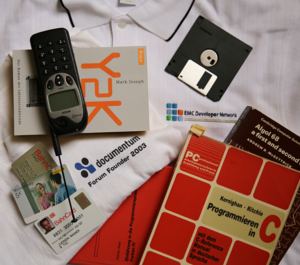
Memorabilia of one of our consultants looking back to 20 years software development with Documentum
Supporting Documentum, EMC’s Enterprise Content Division, DELL EMC and now OpenText
In the past 20 years Documentum was subject to some mergers and acquisitions but the community is still alive. OpenText acquired the Enterprise Content Division of EMC in 2016. Many clients initially seemed to be uneasy about the future of Documentum but we were and are sure that OpenText Documentum is here to stay. Please see Dirk Bode’s blog post “Keep calm and love Documentum (at least quite a bit longer)” and the interview from OpenText Enterprise World 2017: OpenText Live Presents Dirk Bode, fme AG on consulting – YouTube if you are interested to learn why. The messages from OpenText during the last two years are clear: they are committed to further developing Documentum as it has proven to be a reliable and scalable platform that continuously adapts to an increasing number of requirements and the clients have resumed their projects. We are excited to learn more about the latest news at OpenText Enterprise World in Toronto in July.
Growing Documentum Expertise
We are happy that continously training our experts on the latest trends and requirements of our clients has proven to be the right decision. Over time we have added industry-specific process expertise which means our industry experts are both Documentum experts AND for instance Certified Regulatory Document Management Compliance Professionals. To fulfill the high demand for certified Documentum experts we are also regularly hiring additional team members. Should you be expanding or reorganizing the strategy for your OpenText Documentum platform majorly please talk to us so we can align our services and resorces even better to your requirements. Last year we set up a showcase with OpenText Documentum and Amazon Alexa to demonstrate how Documentum can be managed via voice control. Such innovative solutions are of course based on our team’s deep core knowledge with Documentum. Fun fact: did you know that we are using Documentum internally at fme group? One of the most useful customizations we did is the document number – our corporate presentation is probably the best known document number: everybody knows the #6120 😉 Combined with the extended search you can find documents very fast and easily using #… when searching for numbers, *… for document names, and +… for folder names.
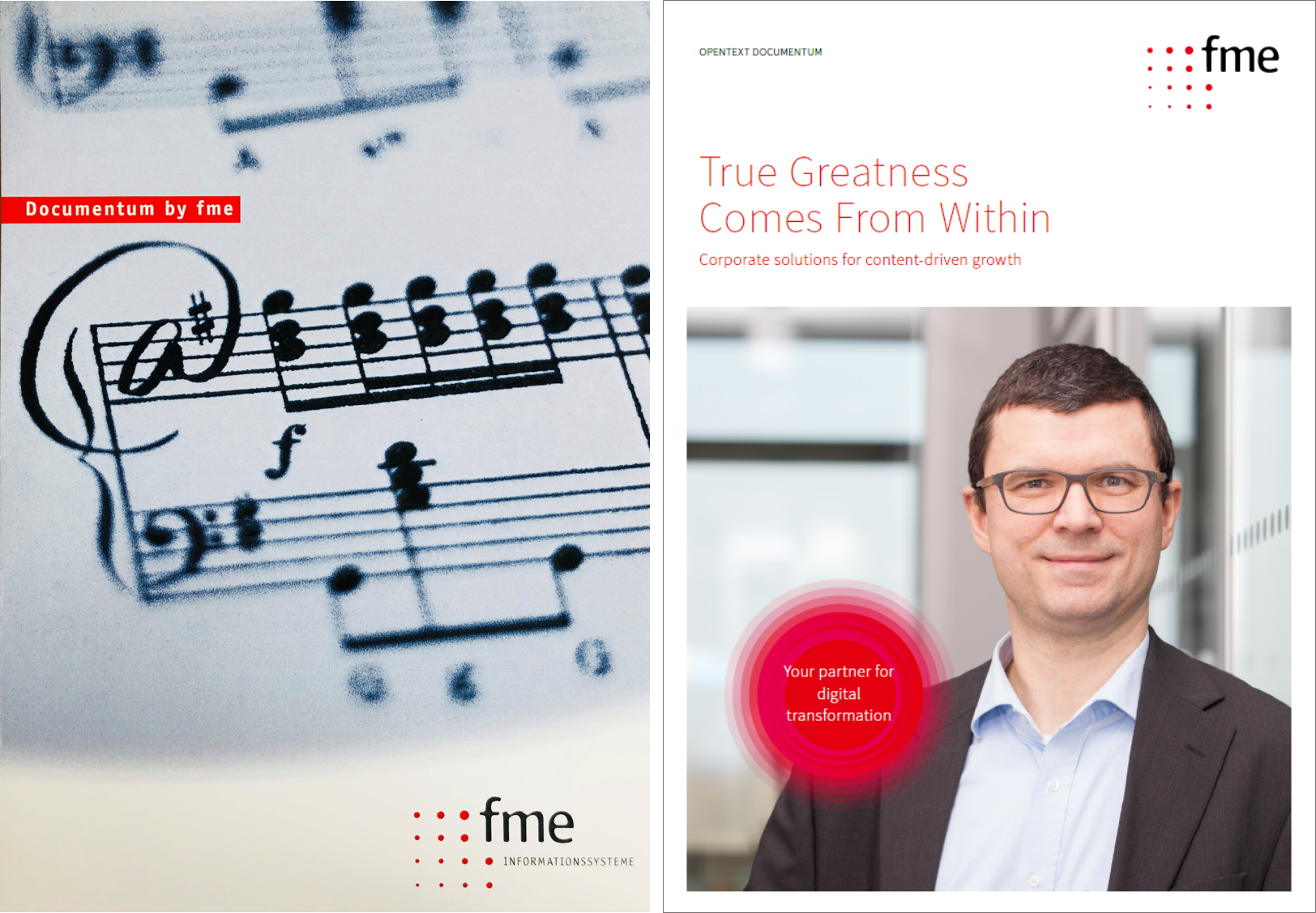
Constant Active Member of the Documentum Community Since 1998
Our commitment to the Documentum platform is obvious: numerous client projects, annual exhibition appearances at all OpenText events, a longterm membership in the Documentum Partner Advisory Board and many marketing campaigns prove this. With the organization of the OpenText Documentum User Group in Germany and in the United State we help our clients connect and benefit from the OpenText Documentum community. Last but not least many awards over the last years demonstrate our commitment. This year we have been nominated as one of three candidates for the OpenText PARTNER of the Year Award in FY 2018. The winner will be announced during the Enterprise World Partner Session on July 9th. Keep your fingers crossed for us!
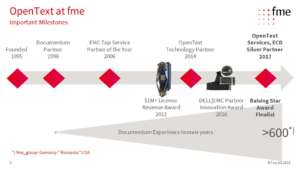
Important milestones in 20 years partnership between Documentum and fme
We believe in Documentum and look forward to continuing this story with you, as our clients and partners and of course with you, our employees! Cheers to the next successful 20 years with OpenText Documentum!
Landingpage 20 Years Anniversary Documentum & fme with videos


 fme AG
fme AG fme SRL
fme SRL

 Learning on paper
Learning on paper Learning using LMS
Learning using LMS Learning by Authoring Program
Learning by Authoring Program Learning by Virtual & Interaction Training
Learning by Virtual & Interaction Training
